When I was growing up in Southern California, I was always wondering these weird, steep roofs that heavily hung over the top of all four sides of a building. I now know they’re called Mansard roofs and they are everywhere. It’s to the point that a 1970s-era building looks like there is something missing if it doesn’t have a Mansard. So, what are they? Briefly, the Mansard roof is a style in which all four sides have two slopes. The second slope is dramatically steeper. But there is a long history behind them.
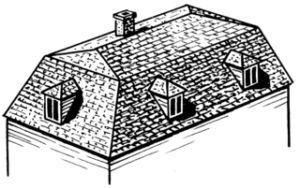
Pierre Lescot (1510-1578) created the mansard roof while he was working on the Louvre Museum in Paris. But it’s not called the Lescot roof. The style gained popularity thanks another architect, Francois Mansart (1598-1666) ,during the Baroque period (1600-1750). It’s his name that went on to give the style an identity, although it’s spelled slightly different. In Europe, “mansard” also means “attic” (or “garret,” which makes sense given the shape of the roof and its size.
The Mansard roof continued growing in popularity in France. The style had another renaissance during the Second French Empire (1853-1870) and is often associated with the stately manner houses built at that time.
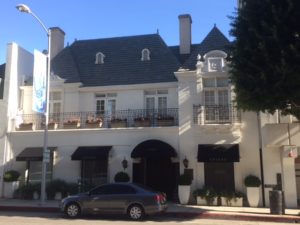
Today, they remain popular because of their versatility, added interior space and aesthetic value. A mansard roof makes it easy to build an additional floor onto an existing structure without having to do much to the rest of the original building. For buildings designed with a mansard roof, it provides an attic/living space with a decorative component. They often feature elaborate dormer windows that add character as well as light into the top floor.
Like many classic style elements, the mansard roof continues to reinvent itself. There was a big resurgence in New York after the 1916 Zoning Resolution that promoted setbacks. A setback a tapered or step-like recessions in the side of tall buildings. In densely populated areas, this can help allow sunlight to reach the street and also help with air circulation and flow. The mansard style fit not only the zoning requirements of the era, but were aesthetically appealing.

The mansard remains a classic element and turns up on occasion but it made another big comeback in the 1960s and 70s during the postmodern era. It was a time of rebellion and architecture was no exception. Architects and designers were tired of the uniformity and lack of ornamentation that were popular in buildings. Designers began placing an emphasis on facades and incorporating subtle uses of classic and historic elements. There were hints of these elements instead of actual revival movements, like there had been in the early twentieth century. The mansards were back but most of them weren’t true mansards. They lacked the traditional two slopes on top and were usually flat on the roof.
They were so popular, in fact, that they were showing up on housing, condominiums (which were growing in popularity at the time) and in retail space. They proved especially functional for commercial use because the mansard provided the ideal roof style to hide or camouflage industrial elements of the building, such heating ducts or air conditioning. Because this was also the era of the fast food restaurant boom, these roofs became staples of places like McDonalds and Jack in the Box.
Once you learn what a mansard, or mansard-like, roof is, you’ll notice them everywhere. Their versatility is remarkable and can be incorporated into nearly any architectural style.
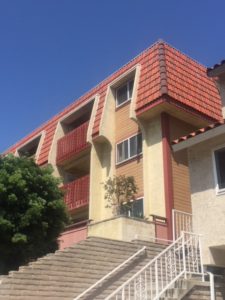 This is a fairly typical mansard-style condo from the 1970s. Red tiles were popular during that time, which added a twist to the traditional mansard look. There is a play on the dormer windows that appeared in older style mansards. Instead of dormer windows, the windows jut up into the roofline.
This is a fairly typical mansard-style condo from the 1970s. Red tiles were popular during that time, which added a twist to the traditional mansard look. There is a play on the dormer windows that appeared in older style mansards. Instead of dormer windows, the windows jut up into the roofline.
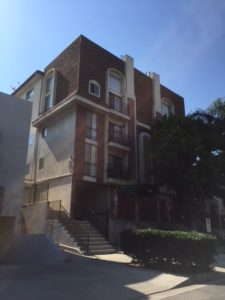 Another fairly typical mansard-style condominium from the post-modern resurgence in Southern California. These are especially steep, boxy sides. The windows, however, are more in line with dormer windows, through they are clearly modernized and updated here. This is a great example of how historical elements are hinted at instead of directly referenced by a true revival.
Another fairly typical mansard-style condominium from the post-modern resurgence in Southern California. These are especially steep, boxy sides. The windows, however, are more in line with dormer windows, through they are clearly modernized and updated here. This is a great example of how historical elements are hinted at instead of directly referenced by a true revival.
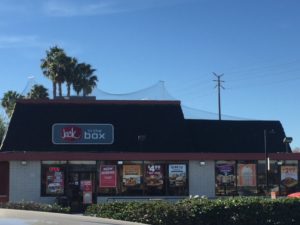 The return of mansard roofs coincided with the fast food restaurant boom of the 1970s. They were ideal for hiding industrial elements on the roof, such as heating and air conditioning equipment.
The return of mansard roofs coincided with the fast food restaurant boom of the 1970s. They were ideal for hiding industrial elements on the roof, such as heating and air conditioning equipment.
